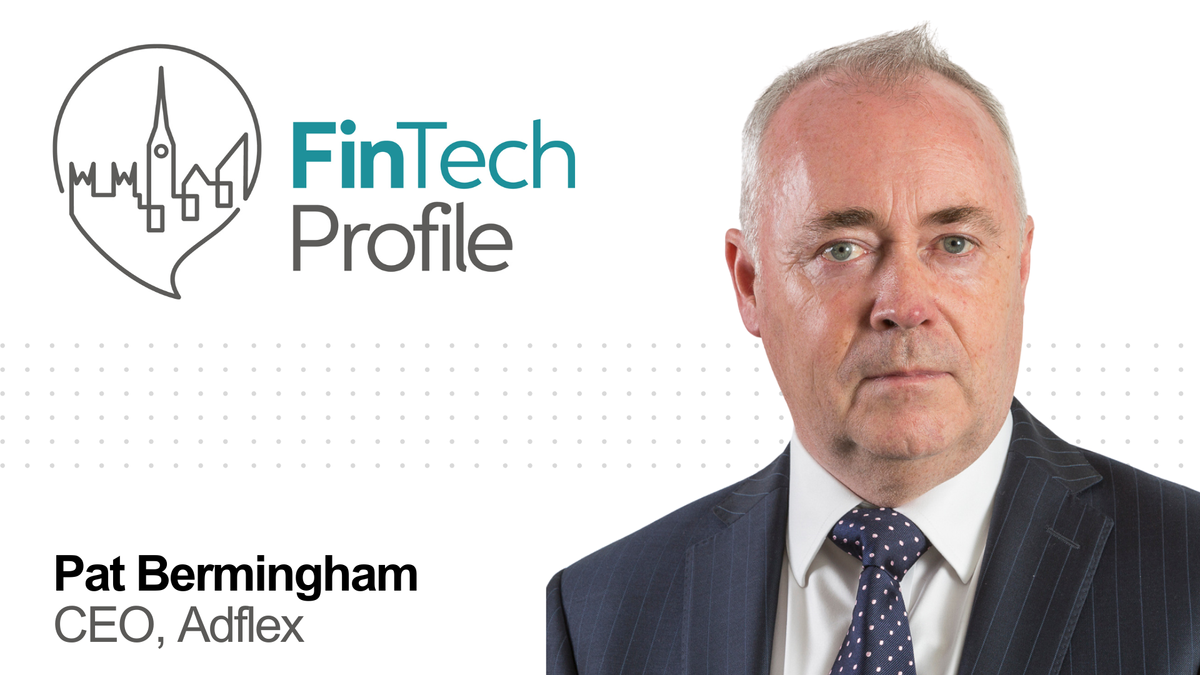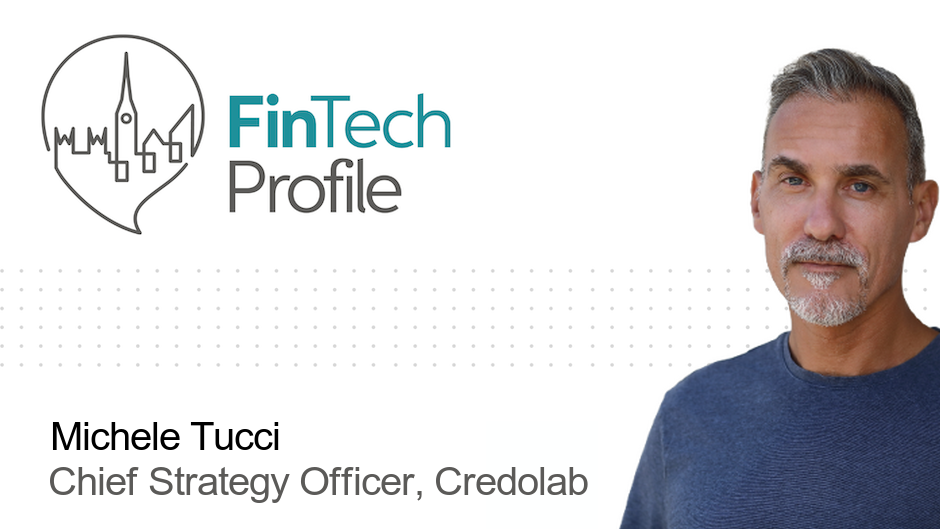Pat Bermingham, CEO & Head of Product, Adflex

Today we're meeting Pat Bermingham, the CEO and Head of Product at Europe's leading commercial card payments processor, Adflex. Read on to find out about Pat's music producer background (yes) and how he made the transition from ♫ melodies to 💻 technologies!
Over to you Pat:
Who are you and what's your background?
Despite two decades in the B2B payments industry, my first love was producing music. Back in the day, I worked with bands, not banks!
Now, you might (rightly) ask what the music and B2B payments industries have common! There’s some subtle overlaps that may surprise you and help you to understand my big career change.
When I was a producer, mixing decks had just become ‘the next big thing’ for the industry. But these decks were very expensive, which meant only the big international labels could afford to use them.
Luckily, at the same time, home computing was exploding onto the global stage. As a music lover – and yes, a tech geek – I was able to leverage the growing power of home computing to deliver affordable sequencing software to professional studios.
This showcased the power of digital innovation, redefining the accepted way of doing things to realise greater accessibility, efficiency and convenience, while simultaneously reducing costs. It meant more bands could be more creative, and it’s something I’m still proud of today.
Now, of course, this process of digitisation has played out across almost every aspect of our daily and working lives. So, when I set up Adflex at the turn of the century, I gave up melodies for business technologies.
Originally starting as an Enterprise Resource Planning provider, the company has since evolved to become a global expert in digital B2B payments.
We apply the same principals I learned during my time as a producer – driving innovation to find new, better ways of doing things – in all our work at Adflex. That’s why we’re now Europe’s leading processor of commercial card payments.
What is your job title and what are your general responsibilities?
My official job title is the CEO of Adflex, but I’m far from your typical CEO.
My true passion will always lie in the tech itself and, because of this, despite being CEO, I’m also Adflex’s Head of Product.
I lead a team of product specialists and developers and have full involvement in the daily tasks relating to product development.
While you may catch me on the occasional podcast or speaking at an industry event every now and then, I’m most happy with my team of developers, working to keep Adflex at the cutting edge of B2B payment technology.
I wouldn’t change it for anything. It’s such an exciting time in this space. Just think of all the innovation you’ve seen in consumer payments, from multiple new entrants. The B2B world is well overdue a similar revolution and we’re at the coalface delivering it!
Can you give us an overview of your business?
In a nutshell, Adflex simplifies B2B payments (specifically card-based), making them straightforward and fast.
We help businesses, through Accounts Payable and Receivable teams, to save time and money with payments-as-a-service, built on easily-integrated, flexible APIs. Businesses, large and small, trust Adflex’s efficient automated payment flows to manage and facilitate B2B transactions and grow their bottom line.
The Adflex cloud-based platform is designed to reduce costs, speed up payment flows and make buying and selling easier. Our platform boosts fraud mitigation and supports buyer-initiated straight-through processing (STP), removing the processing burden from suppliers, enabling prompt reconciliation of transactions and more control over cash flow.
In fact, Adflex was actually the first European processor to execute an STP transaction, well over ten years ago. We believe STP redefines the virtual card process to improve efficiency and security, by flipping the traditional payment process on its head and making B2B payments truly digital and scalable.
For merchants, we offer a wide range of best-in-class payment acceptance technologies that help them differentiate their acceptance offerings from competitors. Whether the merchant wants a more modern off-the-shelf web-based virtual terminal, or a fully integrated payment solution for businesses that use SAP, Adflex can cater for any merchant’s acceptance needs. Our platform is also acquirer agnostic, providing access to industry-leading rates for B2B card transactions.
Tell us how you are funded?
To this day, I’m proud to say that Adflex is self-funded and growing, which is quite unique in the fintech world and a testament to our industry-leading vision, commitment and client services.
What’s the origin story? Why did you start the company? To solve what problems?
Adflex has been at the heart of the B2B fintech revolution from the beginning. While we started out life as an Enterprise Resources Planning (ERP) provider, our main focus has been – and continues to be – enhancing how businesses make payments.
As a consumer, buying products or services is familiar and simple. We choose what we want to buy, go to the checkout, pay the merchant and leave with our goods (or they are sent for delivery). In a matter of clicks, the purchase flow is complete, with very little friction.
But in business payments, smooth user experiences have historically been secondary to lengthy, complex processes. I imagine the majority of people reading this will empathise!
Clunky, outdated invoicing means that buyers must allocate extra resource to Accounts Payable teams just to make a purchase, and those receiving payments are often made to wait during lengthy invoice periods of thirty, sixty or even ninety days.
In the digital world we live in today, I don’t accept this as even close to the best we can do.
As we did in the music industry back in the ‘80s, we must drive innovation to address these shortcomings. By doing this, we free up businesses to focus on what they do best: delivering a quality service and/or product.
That’s why we’re known for fostering innovation and helping companies harness the power of digital payments. Our technology and expertise bring together buyers and suppliers to make transactions fast, cost-effective and straightforward to manage, taking pain out of the supply chain by delivering seamless and secure payment integration that adds value to both buyers and merchants.
Who are your target customers? What’s your revenue model?
Buyers, merchants, card schemes and issuing banks are our customers, but we work with all parties involved in the payment ecosystem, including virtual card and procure-to-pay providers.
Collaboration with all stakeholders in the ecosystem is essential if we are to simplify the increasingly complex world of digital B2B payments for our clients. Being collaborative allows Adflex to operate an agile revenue model, where, in some cases, costs are shared amongst all to help level the playing field. Our team are experts in issuing, acquiring and gateway services for enterprise buyers and merchants. That’s why Adflex is the trusted B2B payment partner of some of the world’s leading financial institutions, including Barclaycard, Bank of America, HSBC, Visa and Mastercard.
If you had a magic wand, what one thing would you change in the banking and/or FinTech sector?
Better collaboration!
I worry that financial institutions have become slow to react to market dynamics and innovation, due to increasingly stringent regulations and compliance. While fintechs are more agile and willing to drive innovation, backing or funding from financial institutions is essential to addressing the current shortcomings of the B2B payments industry.
Too many vanity projects are often presented, with many failing to at least start, let alone deliver on forecasts or early objectives. I would use my powers to ensure collaboration takes place from start-up, through scale-up, to enterprise level. It’s the only way we’ll advance more quickly, with solutions that meet evolving needs.
What is your message for the larger players in the Financial Services marketplace?
I think we can all agree that one of the greatest things to come from the digitisation of our lives is greater convenience.
Whether having your weekly shop delivered to your front door, using your phone to make payments, or streaming your favourite film or TV series without getting up from the sofa, technology has made many aspects of our lives much easier.
But what do all of the above examples have in common? They have all been developed with user experience (UX) front of mind.
Yet, in the world of B2B payments, UX is often still secondary to lengthy, confusing and cumbersome manual processes.
My message for the larger players in the market would be to get back to grass roots and focus on the UX! This is what will help adoption skyrocket.
Where do you get your Financial Services/FinTech industry news from?
I get my Financial Services/Fintech industry news from many sources.
Primarily, I speak to our customers, to gain first-hand, real-time insight into current trends and their challenges and perspectives. The same goes for our partners and prospects.
To gain a wider perspective on the industry as a whole, I read a variety of payments specific news sites, and subscribe to their respective newsletters, including Finextra, The Paypers and PYMNTS.
I still also feel that research and data-led reports are very insightful, despite becoming increasingly commercialised or paid-for. As long as the topic is relevant and the methodology is sound, there is still a lot to learn from these reports.
Can you list 3 people you rate from the FinTech and/or Financial Services sector that we should be following on LinkedIn, and why?
There are honestly too many to mention, and this is one of the reasons why our sector is so interesting.
Over recent months, there has been a shift in the commercial/virtual card space, with an influx of new appointments, of new people, in new roles. This kind of activity shows that innovation and investment is happening.
Ask me this question again in 12-months…
What FinTech services (and/or apps) do you personally use?
Outside the world of B2B, I hold a B2C account with one of the leading neobanks. I find that the app delivers solid services and the focus on UX is clear to see. As an amateur traveller in my free time, I particularly appreciate the ability to use the card abroad, with no fees.
Buy Now Pay Later (BNPL) has earned a poor reputation in recent years, for reportedly promoting spend without sufficient funds at the point of purchase. Yet I think BNPL has a lot to offer, as a line of consumer credit. With the right understanding, BNPL could still be a game changer for personal budgeting.
I’m also extremely excited by the possibilities of network tokens, not just for B2B payments, but for B2C as well. Without diving too deep into this rabbit hole, just imagine getting rid of the standard 16-digit card number. Instead of using the card number, a token (that represents your standard card number) would be used instead to process the payment. One can only imagine the positive effect this will have on payment fraud.
What’s the best new FinTech product or service you’ve seen recently?
Straight-through processing 3.0 (STP 3.0) is hugely exciting; it’s no exaggeration to say that it is changing how B2B payments are conducted.
STP 3.0 offers unique virtual card reader technology, to enhance buyer-initiated B2B payments, and if you read any reports on the future of B2B payments, you’ll know all about virtual card technology. A recent report from Juniper Research stated that virtual cards will be the fastest-growing B2B payment method by transaction value globally by 2028!
A virtual card is a digital version of a commercial card, which is the B2B equivalent of a B2C credit card.
By nature, most benefits of virtual cards are for the buyer. By using a virtual card, buyers can maximise working capital, extending their days payable outstanding (DPO). Suppliers are typically then left shouldering the burden of processing payments manually. Yet, STP 3.0 finally levels the playing field of digital virtual card B2B payments by delivering the benefits of prompt, secure and pain-free transactions to both buyer and supplier. Through using STP 3.0, suppliers that accept card can achieve preferred status and access new revenue streams.
Finally, let's talk predictions. What trends do you think are going to define the next few years in the FinTech sector?
I’m sure I sound like every other fintech CEO when I say that it’s hard to look past artificial intelligence when discussing the biggest trends for the coming years.
Currently though, there is an alarming torrent of hyperbolic opinions being pushed out on AI, making it almost impossible to decipher between hype and reality.
It’s clear there are significant opportunities to leverage AI in fintech, and B2B payments specifically, particularly around payment orchestration and data analysis. But it’s essential to view these opportunities with a balanced understanding of the limitations of AI. Human supervision is still essential when using AI.
In order for AI to fully enter the mainstream, particularly in the business world, users must be able to see the tangible benefits. Using B2B payments as an example, have businesses been able to reallocate meaningful time and resource previously spent processing payments to other areas of the business through using AI? The answer is not yet, but I predict this will start to happen in the near future.
Early adopters are starting to test the water but only time will tell how much of an impact AI will make.
For the B2B payments industry, as the ecosystem continues to diversify and innovate, another key trend will be UX taking centre stage. Soon, corporate buyers will expect the same simplicity in their working lives as they get when buying or selling in their personal lives.
This will be achieved in two ways: first, through more nuanced services like Variable Recurring Payments (VRP), which is like an improved, flexible form of direct debit, and straight-through processing (STP), the latter of which can help turn cards from cost centres into revenue centres with greater visibility, optimisation and control.
Thank you so much for taking the time to participate Pat!
You can find out more about Pat Bermingham on LinkedIn and read more about his company Adflex at http://www.adflex.co.uk.




